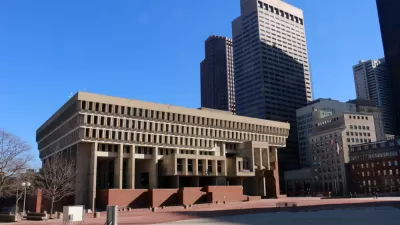Leon Neyfakh of The Boston Globe examines the unexpectedly cohesive political roots of the controversial civic symbol.
Neyfakh reveals that public Christmas trees were first introduced as an American tradition due to a "secretive coalition of Progressive-era social reformers. These civic-minded idealists tried to recast Christmas as an essentially public holiday that could unite people of different ethnicities and social classes behind a single shared tradition."
The rise in new industries and advances and technology brought millions of European immigrants to America in the early 1900s. As cities became more diverse and overpopulated, "social reformers began to fear that the American people were becoming atomized and rootless. They worried that new immigrants would never start feeling at home here, and instead remain isolated in their ethnic enclaves. They worried the poor would be ignored and trampled upon. Looking out at a nation in crisis, the Progressives saw Christmas trees as an opportunity to intervene."
In modern times, it is easy for people to view religious holidays and practices such as the civic Christmas tree as merely exclusionary, and not as as "a catalyst of civic unity, an inclusive gesture that in its time had less to do with expressing a faith than in fostering an idealized vision of American society."
FULL STORY: The secret origins of the civic Christmas tree

Trump Administration Could Effectively End Housing Voucher Program
Federal officials are eyeing major cuts to the Section 8 program that helps millions of low-income households pay rent.

Planetizen Federal Action Tracker
A weekly monitor of how Trump’s orders and actions are impacting planners and planning in America.

Ken Jennings Launches Transit Web Series
The Jeopardy champ wants you to ride public transit.

California Invests Additional $5M in Electric School Buses
The state wants to electrify all of its school bus fleets by 2035.

Austin Launches $2M Homelessness Prevention Fund
A new grant program from the city’s Homeless Strategy Office will fund rental assistance and supportive services.

Alabama School Forestry Initiative Brings Trees to Schoolyards
Trees can improve physical and mental health for students and commnity members.
Urban Design for Planners 1: Software Tools
This six-course series explores essential urban design concepts using open source software and equips planners with the tools they need to participate fully in the urban design process.
Planning for Universal Design
Learn the tools for implementing Universal Design in planning regulations.
Ada County Highway District
Clanton & Associates, Inc.
Jessamine County Fiscal Court
Institute for Housing and Urban Development Studies (IHS)
City of Grandview
Harvard GSD Executive Education
Toledo-Lucas County Plan Commissions
Salt Lake City
NYU Wagner Graduate School of Public Service



























